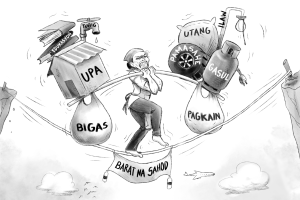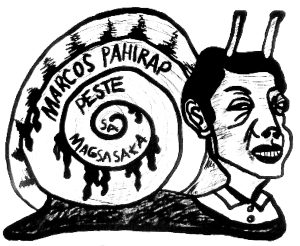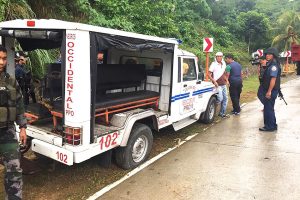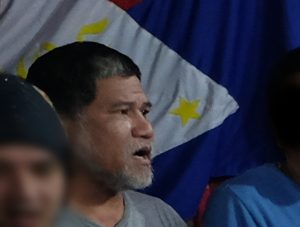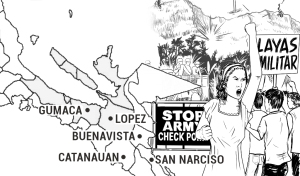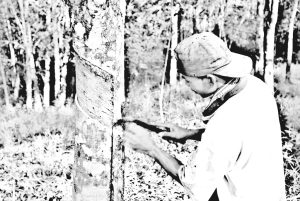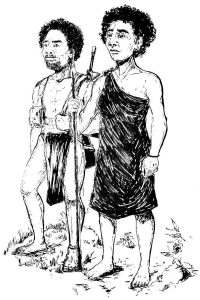Correspondence South Cotabato residents resist San Miguel Corporations' carbon mining

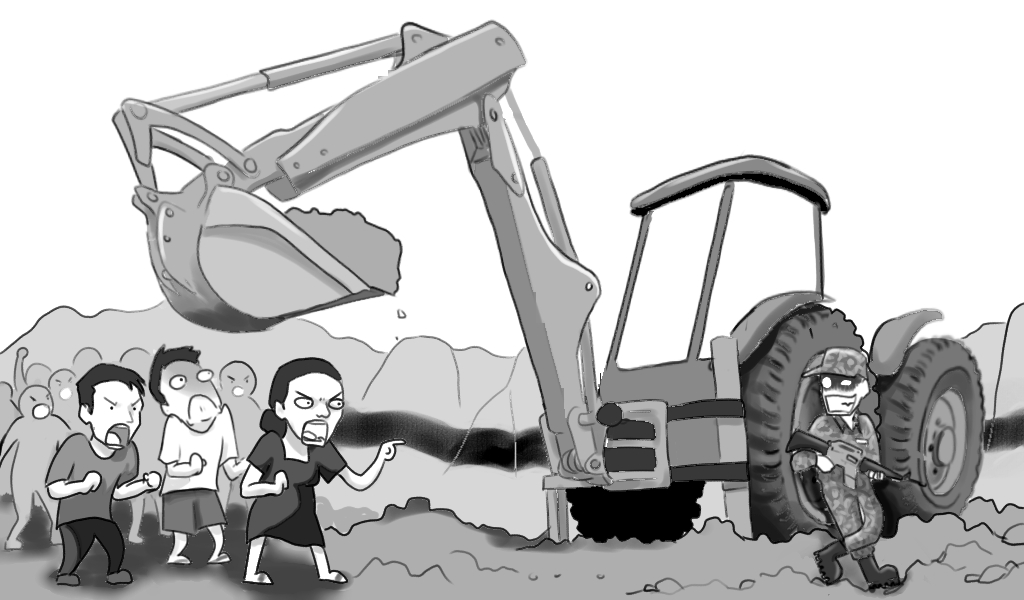
San Miguel Energy Corporation (SMEC) is currently pursuing its coal mining operations in Barangay Ned, Lake Sebu in the province of South Cotabato. The company is aggressively pushing these operations after more than a decade of being forced to stop by fierce public opposition and a ban on open-pit mining in the area. To secure the mines, the military launched a focused operation in the area while threatening residents who oppose it to ensure the operation continues.
Daguma coal project
One of the largest coal mines in the country can be found at the borders of South Cotabato, Sultan Kudarat, and Sarangani provinces in the Daguma Range. It has a total area of 36,000 hectares and is estimated to have 328 million metric tons of reserves. It covers the ancestral lands of the Lumad T’boli and Dulang-Manobo and the vast forests that is home to the Philippine Eagle and endemic animals and plants. A huge part of the mine covers Ned, an agricultural village with an area of 42,000 hectares and a population of approximately 19,000.
Six companies were given mining concessions in the area by the Department of Environment and Natural Resources (DENR). However, Daguma Agro Minerals Inc., Sultan Energy Philippines Corp., and Bonanza Energy Resources Inc. were the only companies with approved applications for production and development. In 2010, SMEC bought these concessions covering an area of 17,000 hectares. SMEC also plans to build its own energy plant (mine-mouth power plant) in the province.
The company then failed to begin operations due to the people’s intense opposition. The state mobilized the military in response to the widespread resistance that led to the massacre of eight Lumads on December 3, 2017. In December 2018, the South Cotabato Provincial Council eventually revoked its permission for the mining operations.
Last year, however, the council reversed its earlier decision. As justification, it claimed that mining will solve the natural burning of coal which causes the “burning ground” and the emergence of “tension cracks.” People in Ned have long faced the ill-effects of combustion which has caused respiratory health problems, as well as damages to roads and landslides in some communities.
This reversal was met with condemnation for ignoring the greater social and ecological problems that coal mining would cause. Its major direct effect is the dislocation of the Lumads and peasants in the area, environmental destruction, and widespread poverty and hunger.
Pollution and harm
According to the company, an estimated 180 million metric tons of coal are available at their mine. They will initially mine at least 100 hectares in its first five years of operation.
The SMEC claims it will use “strip mining” and not “open pit” in the project. Although the two techniques are different, both are “surface mining” and it will also cause broad and irreversible damages to the environment and people’s livelihood.
SMEC will mine lignite coal or so-called brown coal, the lowest grade of coal. Brown coal, due to its brittleness, is not viable for export. However, its use is widespread in mine-mouth power plants around the world. It is also considered the dirtiest type of coal due to the high carbon dioxide that it emits as result of its high moisture content and low energy density.
Apart from intense air pollution, anti-coal mining groups also fear possible contamination of the waters and the destruction of water channels from the rivers of Kubulnan and Allah. Kabulnan flows to the Liguasan Marsh which is an important source of fish. While the Allah River is the main source of irrigation of the vast agricultural lands in South Cotabato and Sultan Kudarat.
Millions of people in Mindanao will surely suffer from the devastating effects of the mine. The extreme effects of Typhoon Paeng in Maguindanao was just a warning of the more serious destruction that could happen in southern central Mindanao if the remaining forests in Daguma are destroyed.
Military repression
To ensure their continued operations, SMEC has strengthened its armed forces to threaten those who oppose the project. It claimed of facing bomb threats against its power plants to seek military protection. Defenders of the company also accuse anti-coal mining groups of being “rebels” or “terrorist” supporters.
In July, the 6th ID-Joint Task Force Central created and activated Task Force Bangis. Areas covered by the mining and surrounding places were identified as its areas of responsibility. Its focus was said to be on defeating the NPA forces operating in the area. Its declared aim is to end insurgency and “terrorism” to achieve “development.”
Residents were shocked that alongside the start of focused military operations of the TF-Bangis, heavy machineries rolled in and the company’s operations started abruptly. Many farmers were forced to sell their land for only ₱80,000 per hectare. Hundreds of families were driven away from their homes and promised relocation and assistance.
Amid these, Lumad and settler residents reiterated their demand for an end to mining and for defense of their land and the environment. It received widespread support from the people of South Cotabato and neighboring provinces.
A campaign was mounted by the people to fight SMEC’s coal project. On October 5, the Archdiocese of Marbel (Koronadal) and Cotabato joined the people in launching a petition to halt the said mining.

